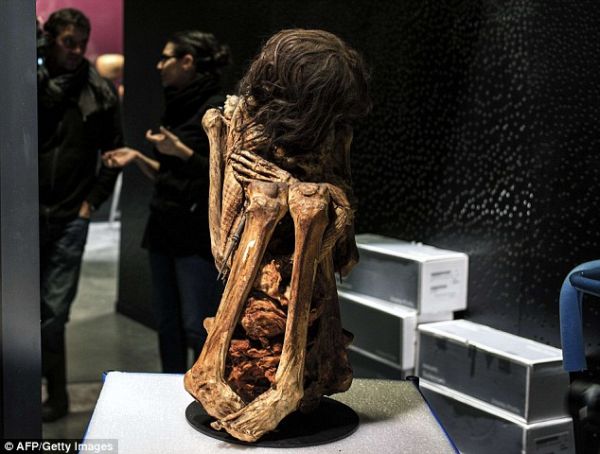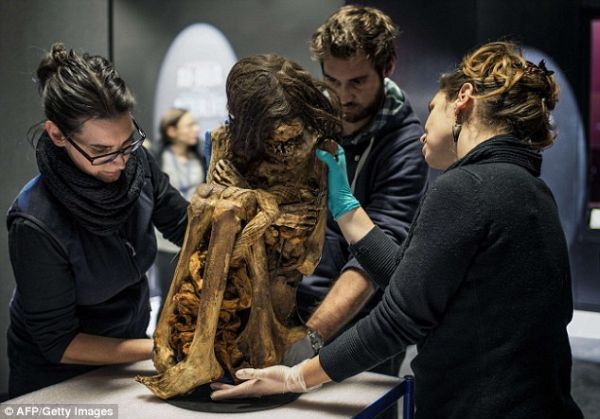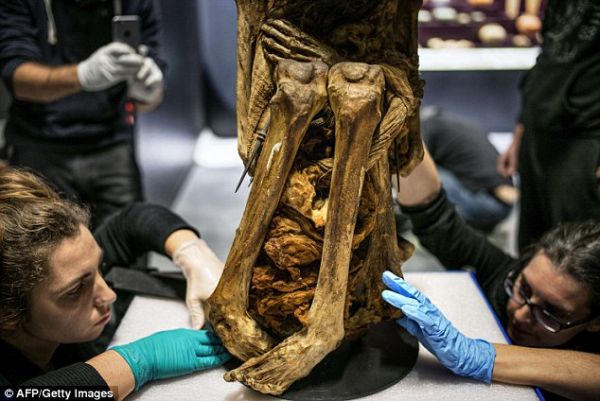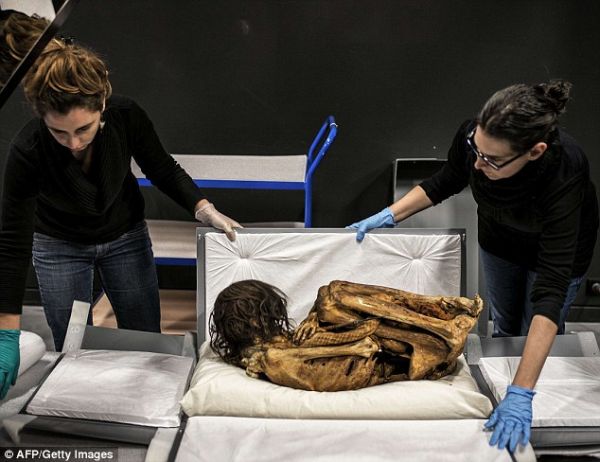In an excavation work near Lima, capital and the largest city Peru, a mummy dating back to the eleventh century has been discovered. As per the experts, the skeleton is that of a 50-year-old woman, sitting in a foetal position. It is expected that during some ceremonial ritual of the Pachacamac civilization, the resting position was such that with the passage of time (years), the skeleton retained the foetal position. Burial site was happened to be at a significant distance from the abandoned civilization’s temple.
Archaeologists have been taking extreme care while keeping her at the same state as they plan to unveil the skeleton for a French museum exhibition, Musee de Confluences, Lyon in the coming next couple of days.
Mummies from Pachacamac civilization
This is not the first time this kind of mummy has been surfaced. In 2010, six mummified dogs were discovered while in 2012, nearly 80 human skeletons were recovered from a 1,000-year-old tomb site corresponding to the Pachacamac civilization. The mummies not only included women but infants as well, who were sacrificed for ritual reasons. Other than these skeletons, nearly 70 mummies were found lying all in fetal the position and were completely draped.
As per the ancient civilization, that survived around the years 800 to 1450, their god Pacha Kamaq, created the first man and woman. As the civilization spread further to South America, the people happened to construct approximately 17 pyramids, merging with the Incas. Considering this monumental site of nearly 600 hectares, the ancient civilization is as important as Machu Picchu and the Nazca Lines.
The Ychsma Project that is operating under the Université Libre de Bruxelles (ULB), Belgium to carry out the archaeological field research at Pachacamac, Peru since 1999, has discovered the mummy.
Human Remains on Display
Some people argue against the point of displaying the human remains by museum authorities but I feel that it’s in vain. These carcasses give us insights about the past civilizations, their culture and beliefs. There’s no harm in knowing the past, after all it’s a way of getting an acquaintance with the past. If doctors have autopsy tools, archaeologists have their excavation tools.
Source: Daily Mail







